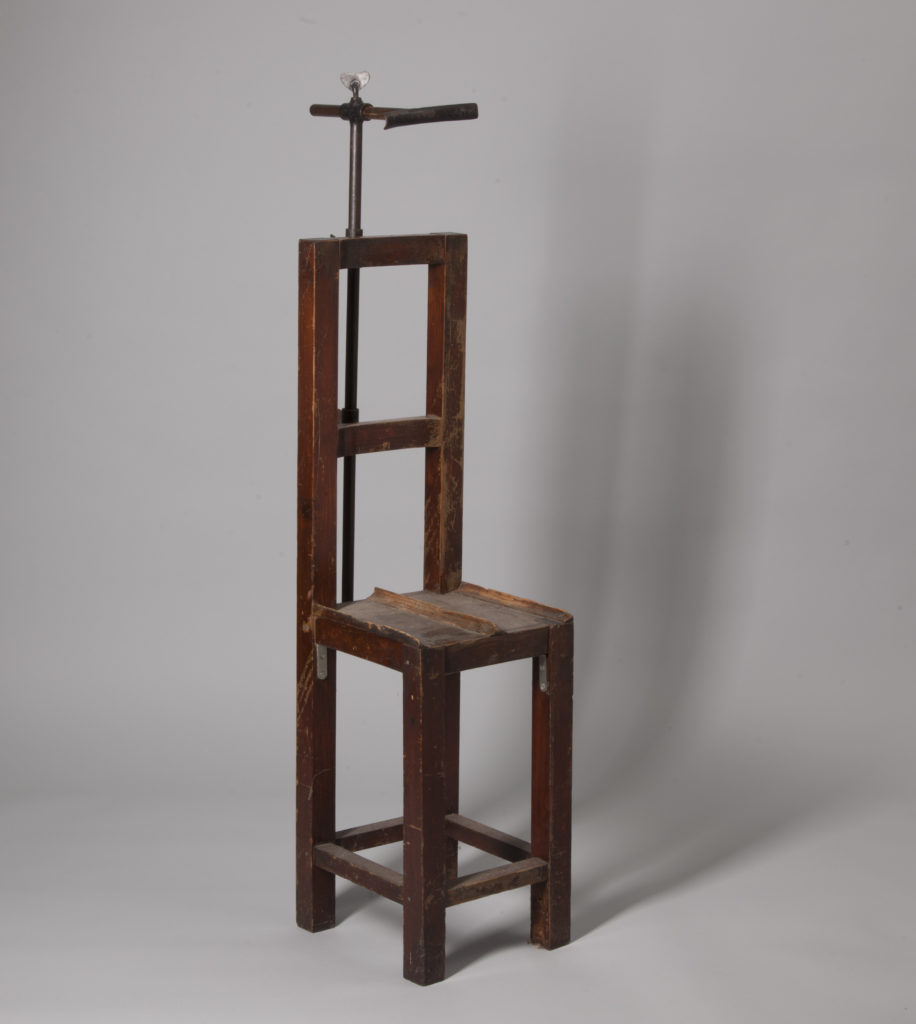Legal photography
From photography’s very beginnings, portraits made in daguerreotype were used to identify individuals. Around 1860, the widespread use of reproduction proofs and the invention of the calling card intensified the practice of legal photography. These formats made it possible to distribute pictures of wanted criminals.
Following the events of the 1871 Paris Commune, suspects were photographed in surrounding prisons. In 1872, the first police photography service was created. In 1882, Alphonse Bertillon developed an anthropometric system, bertillonage, which consisted of producing signal files, containing the measurements and characteristic signs of every subject. Both a frontal and profile photo were taken of the detainee. These two portraits completed the file. Then in 1888, Bertillon was named head of the photographic department of the identification service for the Paris Prefecture Police.
In the heart of the studio was a chair set a good distance away from the camera, which allowed frontal and profile photos to be taken of the detainees. Lighting and the positioning of the subject had to be strictly observed. A fast-printing machine, which was also present in the studio, could produce 20,000 small format photographs in a single night, thus enabling wide distribution of images when looking for a criminal. This system soon spread all over Europe.
In 1909, Rodolphe Archibald Reiss, a professor of photographic sciences at Lausanne University and editor of the Swiss Photography Review created the Institute of Police Science, where the Bertillon method was put into practice.


